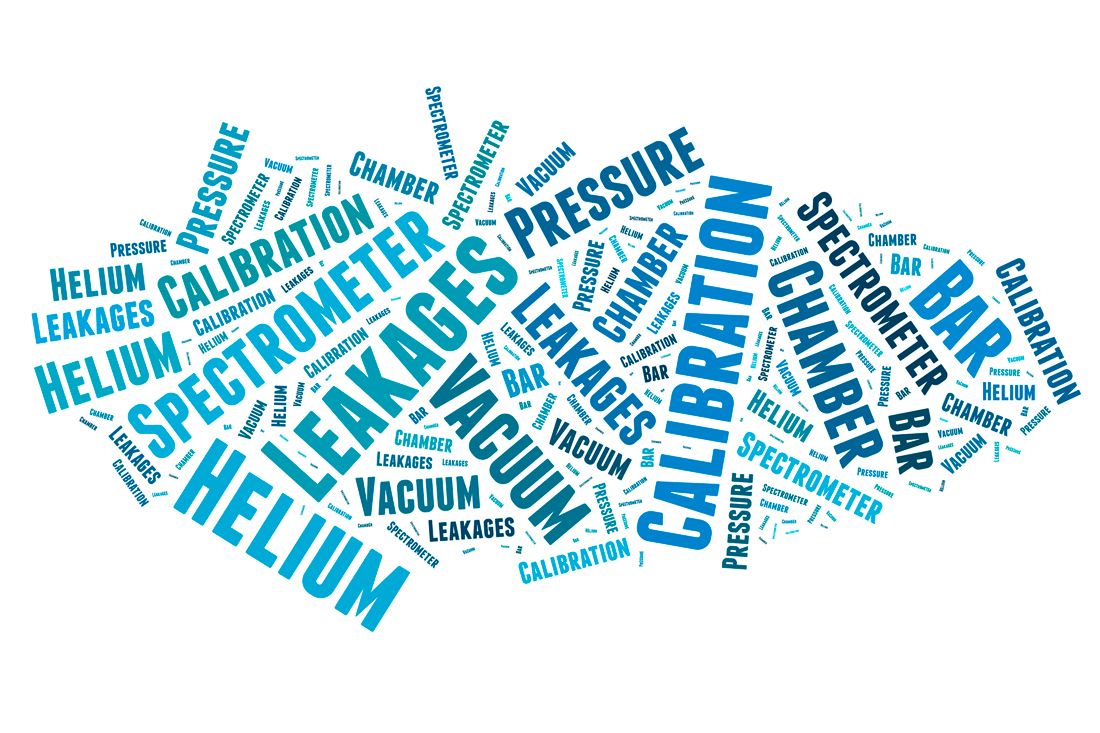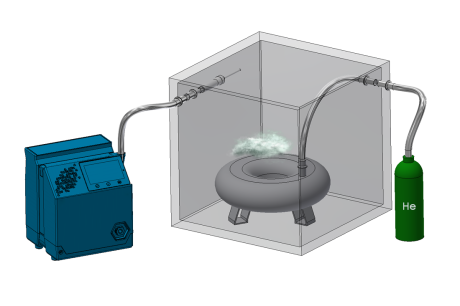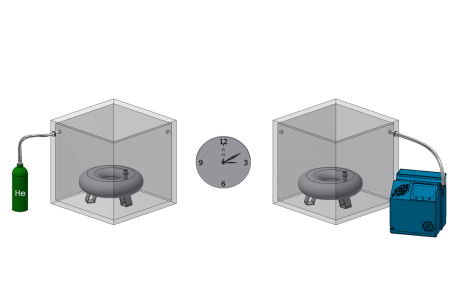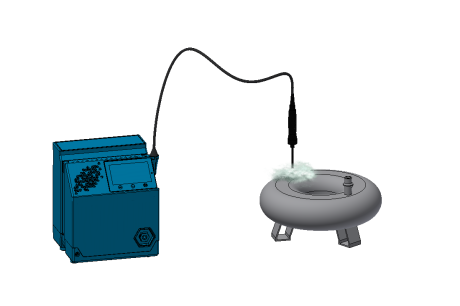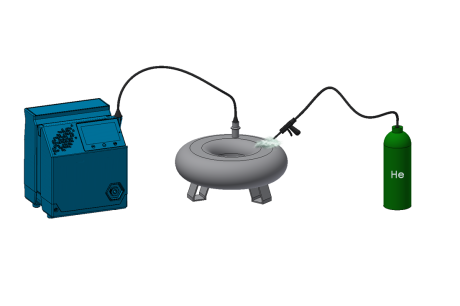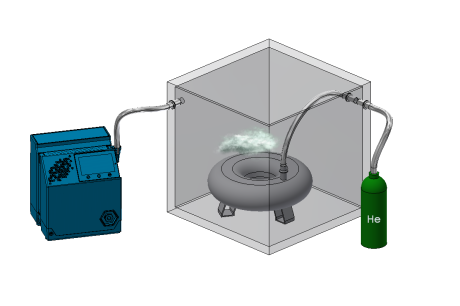The technology requires an instrument capable of gas detection: the mass spectrometer. In the leak detection applications it is used a particular version of mass spectrometer, optimized for the detection of one gas only: the helium leak detector.
The leak test by the means of a helium leak detector is objective as it does not depend on the operator’s evaluation, so ensuring a high level of reliability.
Furthermore, the possibility to recover the helium used during the tests reduces the consumption and the running costs of the leak test machine.
The target of the helium leak detection is to detect the global leak rate of the customer’s component in a range that typically extends from from the range 10-7 mbar*l/s to the range 10-3 mbar*l/s. Leak rates in the range 10-2 and 10-1 mbar*l/s can be detected by using helium mixture at low concentration (usually 10%), while leak rates in ranges lower than 10-7 mbar*l/s can also be detected even if such demanding applications are not very much frequent.
The system automatically verifies the tightness of the components by using the technique of the global test under vacuum chamber: after the component has been placed into the chamber, both them are evacuated up to the value needed for the test. The component is then pressurized with a tracer gas: through the leak detector, the system is able to detect the total flow due to all the leaks present on the component. The process allows to obtain a quantitaive measurement of the leak. The helium leak detection is usually preceeded by a gross leak test made by air, with the purpose of reducing the risk of contaminating the chamber with large amounts of helium in case a gross leak is present.
How does the mass spectrometer work?
Simplifying, the leak detector transforms the measurement of the ionization current made by the helium molecules into an electric signal. This process is realized by ionizing the air that enters into the leak detector and guiding the ionized molecules into a magnetic field that gives to the trajectory of the molecules a deflection proportional to the mass of the molecules.
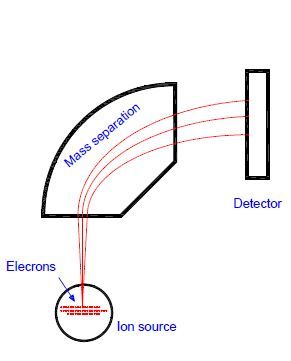
Why helium?
- It is a noble gas: it is inert and does not react with other gases, or with the part being tested.
- Helium is colorless, odorless, tasteless, non-toxic, and does not cause any problems in case of dispersion into the environment.
- It is present in the atmosphere only in small quantities (5 ppm), thus making the background noise in the leak rate measurement very low.
- Helium can also be recovered in recovery systems, which will allow customers to reduce the quantity of helium to be purchased and so the risk of running out of stock,
General description of helium leak detection systems
A helium leak detection system generally provides:
- One or more vacuum chambers, with manual or automatic lids, assembled on a welded and painted steel frame. The access to the chambers is usually protected by light curtains.
- Test fixtures to connect the components under test to the process circuit of the system.
- Vacuum pumps which are needed to generate and maintain the vacuum into the test chamber(s) vacuum and to evacuate the component under test.
- One or more leak detectors
- Electric and pneumatic panels.
- An industrial PC, provided with touch-screen color monitor, which performs HMI functions while a PLC runs the process
- The supply can also include a helium recovery system suitable for the needed capacity
Helium leak detection can be applied to a wide variety of industrial fields such as:
- Refrigeration
- Air conditioning
- Automotive
- Aerospace
- Fire extinguisher
- Valves
- Food packaging
- Pharmaceutical
- Petrochemical
- Energy
- White goods

